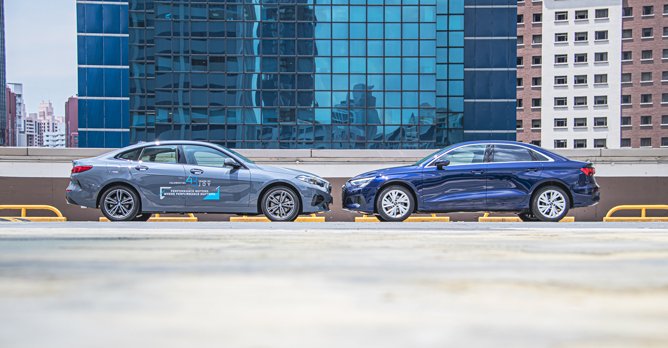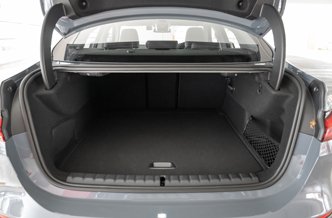Audi A3 Sedan Mild Hybrid 1.0 (A) vs BMW 2 Series Gran Coupe 216i (A)
29 Sep 2022|28,530 views
Audi A3 1.0 Sedan
Feels like a larger executive saloon
More upmarket interior
Roomier backseat
More efficient drivetrain
BMW 216i Gran Coupe
Sportier looks, snazzier cockpit
More driver-focussed handling
Rorty three-cylinder note
Sharper steering
Modern entry-level premium sedans are a far cry from the models available a decade ago. Back then, 'base' models had few amenities and modest performance - their main cachet was their badge.
Buyers' expectations have of course risen over time, which is why today's entry-level sedans, such as the Audi A3 and BMW 216i, are polished and well-equipped.
Audi is hoping that the current A3 Sedan can be as successful as the previous one. This 1.0-litre model is roomier and better built than before, and crucially, its equipment level is nearly on a par with the 1.5-litre version.
Already making a mark in this segment is the popular 216i Gran Coupe. BMW's smallest sedan (it has four doors and a boot after all) offers numerous standard features, and promises the type of handling you'd expect from the Munich automaker.
So, which of these two Cat A models gives drivers the more complete junior executive experience?
Design notes
Between the two cars, it is the 216i that stands out with its chiselled face, rising shoulder lines and perkier-looking rear end.
The frameless windows give the Bimmer a sexier character as well. I like how the boot lid tapers towards the end, which makes the Gran Coupe seem like it has a 'duck tail'.
Whether you like the latter's design or not, you'd have to admit that it is distinctive. The taillights seem oversized for a model in this segment, though.
Meanwhile, the A3, in typical Audi fashion, is more understated. Because its styling is similar to its larger saloon siblings, you might even mistake it for the A4 when viewed from afar.
It's a quietly handsome car, with balanced proportions and short overhangs. But look closer and you'll notice the creases on the bonnet and bulges along the flanks, which give the A3 a surprisingly muscular character.
Dashboards and dials
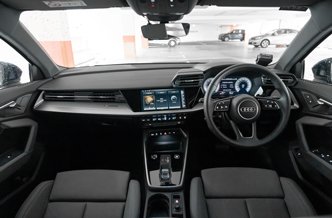 | 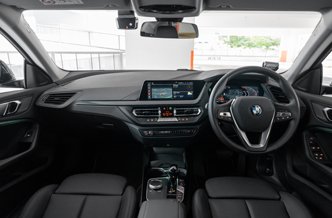 |
The layout is tidy, with fewer buttons and switches. Interacting with the infotainment is pretty much done via a touchscreen, whereas in the 216i, there's also a control knob that makes it easier to navigate the menus while driving.
However, it must be said that the A3's two USB-C ports below the infotainment are more convenient than the single USB-A port in the 216i, which will take longer to charge your phone.
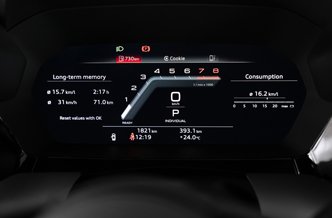 | 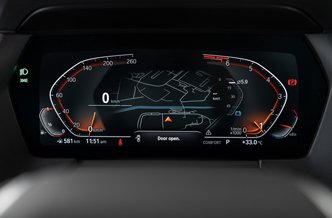 |
Both the A3 and 216i feature digital instrument clusters, but I prefer the former's fully variable layouts to the latter's 'avant-garde' meter design, which only allows you to vary the background colour.
Speaking of hues, the 216i offers several hues in the ambient lighting menu. This makes the cabin feel snazzier than the A3's, which does not have mood lighting.
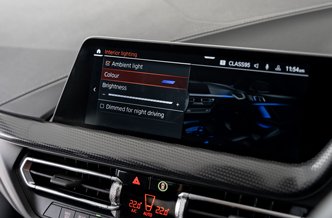 | 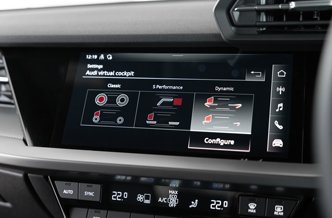 |
Having a gear knob instead of a shift tab also helps, as you discover how easily it falls to hand.
Getting the driver ergonomics right takes years of experience, and it shows in the Bimmer. But with regard to practicality, it's the A3 and its larger storage points that gets the nod.
Passengers and belongings
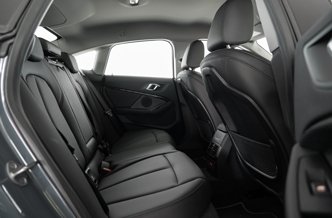 | 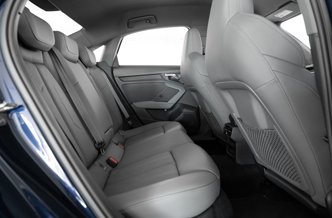 |
BMW designers took the 'coupe' moniker literally, too. With the sloping roofline, headroom is at a premium for anyone over 1.75m tall.
Meanwhile, occupants in the A3 get more legroom and foot space, and will also find ingress/egress easier since the door apertures are wider. Seating for the middle passenger is also less awkward, since the floor protrusion is lower.
If you had to ferry your colleagues, they'd be comfier in the A3 than in the 216i. That said, to help keep everyone cool and connected, both cars have air vents and dual USB-C ports.
Now, despite the 216i being larger than the A3, both cars' boot volumes are nearly identical, with the former having 430 litres and the latter offering 425.
However, the A3 is more user-friendly, as its wider opening makes it easier to access the deeper part of the compartment. Meanwhile, if your items slide all the way into the recesses of the 216i's boot, you'll have to stick your upper body in there to reach it.
Three-cylinder power
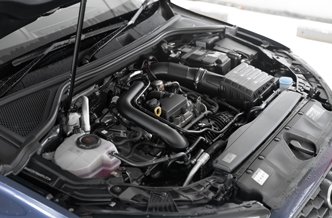 | 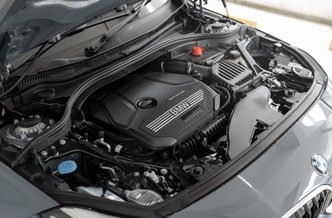 |
Beneath the 216i's bonnet is a 1,499cc powerplant capable of 107bhp and 190Nm. It sends power to the front wheels via a seven-speed dual clutch transmission, which helps the car reach the century mark in 10.8 seconds.
Now, the A3 may have the smaller engine, but it's actually more powerful than the one in the 216i. Audi's 999cc motor puts out 109bhp and a stouter 200Nm, and it also sends these to the front wheels through a seven-speed dual-clutch gearbox.
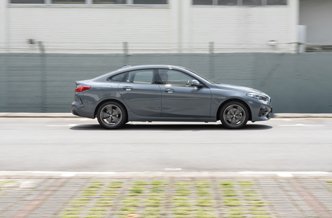 | 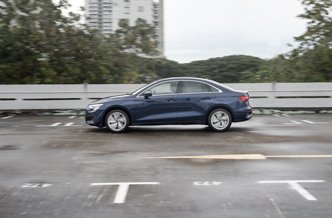 |
The A3's other advantage is its efficiency. Apart from having a smaller displacement engine, the 48-volt mild hybrid system lets it coast with the motor switched off - when conditions are right.
Driven gently, Audi says the A3 1.0 can average up to 23.3km/L, compared to the 18.2km/L that the 216i can manage.
But while the A3 is sprightlier and more efficient, it's the 216i that's more fun and engaging to drive.
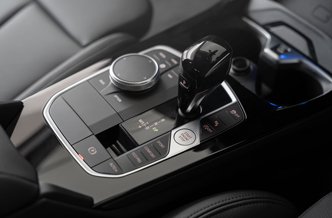 | 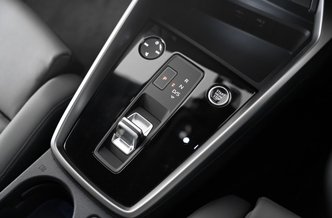 |
This makes the car easier to place and more fun to chuck around corners. After a long day at the office, a dynamic drive home is one of the best ways of busting stress.
Meanwhile, the A3 takes the opposite approach. Instead of being keen and agile, it impresses by delivering refinement you'd normally expect in an A4. The handling is neat and poised, while the ride itself is quieter, so you feel like you're in a larger saloon.
Deciding factors
BMW's most compact sedan may not be rear-wheel drive, but it nevertheless has the drive and responsiveness that many have come to expect from the brand. The nice engine note is a bonus.
Apart from its more distinctive exterior design, the 216i also has a more attractive interior, thanks in large part to the mood lighting. And at $207,999, it's only marginally costlier than the A3, which has a price tag of $203,148.
That said, if I'm looking for a junior executive experience, I want something besides sporty handling and a snazzy cabin. I might be considering an entry-level sedan, but I still want one that gives me a taste of its higher-end siblings.
This is why I find the A3 Sedan more compelling than the 216i. Audi's most compact saloon may not have a colourful cockpit, but the quality build and minimalist layout definitely make it feel more upmarket.
And for what it lacks it dynamics, it certainly makes up for with its roominess, refinement and efficiency. After all, the lower running costs might just help me get into a full-size executive saloon sooner rather than later.
Looking to compare more cars? Check out these other Group Tests
Mazda CX-5 squares off against the Volkswagen Tiguan
Nissan Qashqai faces off against the Skoda Karoq
Honda HR-V lines up alongside the Peugeot 3008
Mercedes-Benz CLA180 goes head-to-head with the BMW 216i Gran Coupe
Opel Mokka takes on the Renault Captur
Polestar 2 Long Range Single Motor goes up against the Tesla Model 3
Audi Q5 lines up alongside the Jaguar F-Pace
Audi A3 1.0 Sedan
Feels like a larger executive saloon
More upmarket interior
Roomier backseat
More efficient drivetrain
BMW 216i Gran Coupe
Sportier looks, snazzier cockpit
More driver-focussed handling
Rorty three-cylinder note
Sharper steering
Modern entry-level premium sedans are a far cry from the models available a decade ago. Back then, 'base' models had few amenities and modest performance - their main cachet was their badge.
Buyers' expectations have of course risen over time, which is why today's entry-level sedans, such as the Audi A3 and BMW 216i, are polished and well-equipped.
Audi is hoping that the current A3 Sedan can be as successful as the previous one. This 1.0-litre model is roomier and better built than before, and crucially, its equipment level is nearly on a par with the 1.5-litre version.
Already making a mark in this segment is the popular 216i Gran Coupe. BMW's smallest sedan (it has four doors and a boot after all) offers numerous standard features, and promises the type of handling you'd expect from the Munich automaker.
So, which of these two Cat A models gives drivers the more complete junior executive experience?
Design notes
Between the two cars, it is the 216i that stands out with its chiselled face, rising shoulder lines and perkier-looking rear end.
The frameless windows give the Bimmer a sexier character as well. I like how the boot lid tapers towards the end, which makes the Gran Coupe seem like it has a 'duck tail'.
Whether you like the latter's design or not, you'd have to admit that it is distinctive. The taillights seem oversized for a model in this segment, though.
Meanwhile, the A3, in typical Audi fashion, is more understated. Because its styling is similar to its larger saloon siblings, you might even mistake it for the A4 when viewed from afar.
It's a quietly handsome car, with balanced proportions and short overhangs. But look closer and you'll notice the creases on the bonnet and bulges along the flanks, which give the A3 a surprisingly muscular character.
Dashboards and dials
The A3's clean and functional interior (left) looks staid compared to the 216i's, but it feels more atas
Audi's penchant for restraint can be found behind the wheel of the A3. Compared to the 216i, the A3's cockpit looks neater and more minimalist.The layout is tidy, with fewer buttons and switches. Interacting with the infotainment is pretty much done via a touchscreen, whereas in the 216i, there's also a control knob that makes it easier to navigate the menus while driving.
However, it must be said that the A3's two USB-C ports below the infotainment are more convenient than the single USB-A port in the 216i, which will take longer to charge your phone.
The A3's instrument panel (left) is easy to read no matter which layout is selected, while the 216i's cluster takes getting used to
As expected, the A3's build quality feels even more solid than the 216i's. The buttons have better tactility and also sound nicer when pressed.Both the A3 and 216i feature digital instrument clusters, but I prefer the former's fully variable layouts to the latter's 'avant-garde' meter design, which only allows you to vary the background colour.
Speaking of hues, the 216i offers several hues in the ambient lighting menu. This makes the cabin feel snazzier than the A3's, which does not have mood lighting.
The 216i (left) focuses on aesthetics with its mood lighting palette, while the A3 is all about function with its configurable virtual cockpit
Further improving the mood in the 216i is the driving position, which is more focussed than the A3's.Having a gear knob instead of a shift tab also helps, as you discover how easily it falls to hand.
Getting the driver ergonomics right takes years of experience, and it shows in the Bimmer. But with regard to practicality, it's the A3 and its larger storage points that gets the nod.
Passengers and belongings
The 216i's rear bench (left) isn't as cushy as the A3's, and the door openings are narrower than expected
The 216i is larger than the A3 (4,526mm vs 4,495mm) and has a longer wheelbase as well (2,670mm vs 2,636mm), but surprisingly, the backseat here is the one that's more compact.BMW designers took the 'coupe' moniker literally, too. With the sloping roofline, headroom is at a premium for anyone over 1.75m tall.
Meanwhile, occupants in the A3 get more legroom and foot space, and will also find ingress/egress easier since the door apertures are wider. Seating for the middle passenger is also less awkward, since the floor protrusion is lower.
If you had to ferry your colleagues, they'd be comfier in the A3 than in the 216i. That said, to help keep everyone cool and connected, both cars have air vents and dual USB-C ports.
Now, despite the 216i being larger than the A3, both cars' boot volumes are nearly identical, with the former having 430 litres and the latter offering 425.
However, the A3 is more user-friendly, as its wider opening makes it easier to access the deeper part of the compartment. Meanwhile, if your items slide all the way into the recesses of the 216i's boot, you'll have to stick your upper body in there to reach it.
Three-cylinder power
The A3's in-line-three (left) doesn't have nice vocals, but it attracts less road tax, drinks less petrol and provides more ponies
Both the A3 and 216i are motivated by turbocharged in-line-three engines, but that's where their similarities end.Beneath the 216i's bonnet is a 1,499cc powerplant capable of 107bhp and 190Nm. It sends power to the front wheels via a seven-speed dual clutch transmission, which helps the car reach the century mark in 10.8 seconds.
Now, the A3 may have the smaller engine, but it's actually more powerful than the one in the 216i. Audi's 999cc motor puts out 109bhp and a stouter 200Nm, and it also sends these to the front wheels through a seven-speed dual-clutch gearbox.
The 216i Gran Coupe (left) has the ability to dance around the A3 Sedan, but the latter's refinement is preferable after a long day at work
With more power and considerably less mass to move (1,285kg versus 1,425kg), the A3 manages the century sprint in 10.6 seconds.The A3's other advantage is its efficiency. Apart from having a smaller displacement engine, the 48-volt mild hybrid system lets it coast with the motor switched off - when conditions are right.
Driven gently, Audi says the A3 1.0 can average up to 23.3km/L, compared to the 18.2km/L that the 216i can manage.
But while the A3 is sprightlier and more efficient, it's the 216i that's more fun and engaging to drive.
The 216i's gear lever (left) is preferable to the A3's tab, as it provides easy access to 'S' mode and an extra set of manual override shift points
The Bimmer three-pot likes being stretched, and rewards you with a rorty soundtrack. The thickly padded steering wheel offers a positive grip, while the helm itself is quicker and more accurate than the A3's.This makes the car easier to place and more fun to chuck around corners. After a long day at the office, a dynamic drive home is one of the best ways of busting stress.
Meanwhile, the A3 takes the opposite approach. Instead of being keen and agile, it impresses by delivering refinement you'd normally expect in an A4. The handling is neat and poised, while the ride itself is quieter, so you feel like you're in a larger saloon.
Deciding factors
BMW's most compact sedan may not be rear-wheel drive, but it nevertheless has the drive and responsiveness that many have come to expect from the brand. The nice engine note is a bonus.
Apart from its more distinctive exterior design, the 216i also has a more attractive interior, thanks in large part to the mood lighting. And at $207,999, it's only marginally costlier than the A3, which has a price tag of $203,148.
That said, if I'm looking for a junior executive experience, I want something besides sporty handling and a snazzy cabin. I might be considering an entry-level sedan, but I still want one that gives me a taste of its higher-end siblings.
This is why I find the A3 Sedan more compelling than the 216i. Audi's most compact saloon may not have a colourful cockpit, but the quality build and minimalist layout definitely make it feel more upmarket.
And for what it lacks it dynamics, it certainly makes up for with its roominess, refinement and efficiency. After all, the lower running costs might just help me get into a full-size executive saloon sooner rather than later.
Looking to compare more cars? Check out these other Group Tests
Mazda CX-5 squares off against the Volkswagen Tiguan
Nissan Qashqai faces off against the Skoda Karoq
Honda HR-V lines up alongside the Peugeot 3008
Mercedes-Benz CLA180 goes head-to-head with the BMW 216i Gran Coupe
Opel Mokka takes on the Renault Captur
Polestar 2 Long Range Single Motor goes up against the Tesla Model 3
Audi Q5 lines up alongside the Jaguar F-Pace
Car Information
Audi A3 Sedan Mild Hybrid
CAT A|Petrol-Electric|23.3km/L
Horsepower
81kW (109 bhp)
Torque
200 Nm
Acceleration
10.6sec (0-100km /hr)
BMW 2 Series Gran Coupe 216i Sport (A)
CAT A|Petrol|18.2km/L
Horsepower
80kW (107 bhp)
Torque
190 Nm
Acceleration
10.8sec (0-100km /hr)
This model is no longer being sold by local distributor
All Used BMW 2 Series Gran CoupeThank You For Your Subscription.
























































